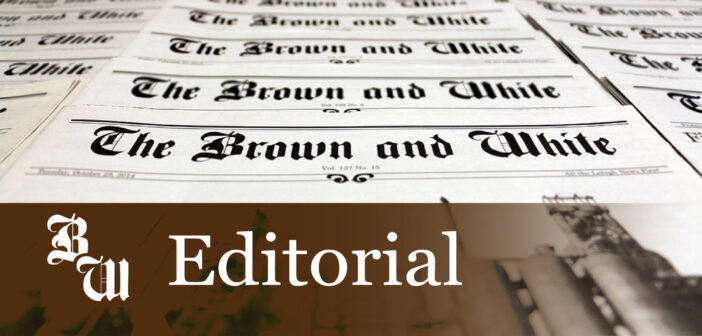The start of the semester is a time of uncertainty for everyone. First-year students must learn to navigate a more independent lifestyle, while upperclassmen must face the harsh reality of approaching their final years at college.
Adapting to new social scenes, adjusting to new living situations and acclimating to new classes is inevitably hectic. After all, transitions are challenging.
Throughout the chaos, however, there are some constants that students can always count on. Small familiarities that instill a sense of control and comfort through ongoing change.
Students can trust that Taylor Gym will have treadmills and rely on Saxby’s for a cold brew. They can anticipate greasy chicken fingers in Rathbone on Fridays and expect to buy textbooks at the bookstore. Or, can they?
This semester, the Lehigh Bookstore, once a comfortable and familiar place, has been formally renamed “The Lehigh Store.” The first floor was restructured to promote campus pride, while the second floor, previously filled with textbooks and school supplies, was replaced by the university’s Mail Center.
The Mail Center’s old location, nestled between Johnny’s Bagels and Deli and The Cup, now sits dark and vacant.
A relocation across Farrington Square is minor, with the Mail Center a mere hundred feet away from its former home. Despite the short distance, this change has impacted students’ daily routines.
While the redesign is certainly modern, one thing is missing: the “bookstore” has no books.
Most syllabi are sent out to students prior to the first day of classes, giving them an idea of the course’s framework and informing them as to whether or not they will need to buy textbooks. Despite this advanced warning, students often wait for the official start of the semester to make these purchases.
Professors each have different teaching styles, so while some note that the textbook is crucial for success in the course, others say it’s just a formality. They similarly have differing opinions regarding hard-copy resources versus e-books, which often depends on in-class computer policies.
Upon hearing their professor’s preference on the matter, students will either order the necessary books or go to the bookstore to make in-person selections.
With the new layout, however, the latter is no longer an option.
Students’ only choice is to order online for pick-up, understandably a far slower process. If a chosen book is unavailable after ordering, The Lehigh Store will automatically update the order with another version, regardless of the alternative’s price.
Administration says the Mail Center’s relocation was prompted by increased package volume and is intended to improve turnaround times. While this may come to be true in the future, the change has currently shown to be inconvenient for students.
In addition to the elimination of physical textbooks, package pick up is also delayed. A campus-wide email sent on Aug. 29 acknowledged the slowness, describing an unprecedented 5,000 packages received in the first six days of the semester.
It’s reassuring that the Mail Center is addressing these delays transparently to the student body and is recruiting additional staff and extending hours to alleviate these issues. However, logistics aside, the renovation is representative of much more than just a new aesthetic. The small adjustment symbolizes just another one of Lehigh University’s constant changes.
Though not all of these changes are “bad” ones, they add up.
Aside from vague administrative emails and short-captioned Instagram posts, students often aren’t given much explanation for campus adjustments. While students are vaguely asked for “feedback,” they are hardly consulted regarding the more tangible and immediate campus decisions.
It often feels as though these changes are happening around the student body, instead of involving it.
The university has indicated that they do want students to feel more involved on campus, evident by its goal to incorporate students’ input into the university’s strategic plan.
It’s promising to see that students are being asked to contribute to long-term goals, many of which will benefit future generations. Even so, administration should similarly enlist student opinions on the tangible changes that are happening right now, impacting students in the present.
Students and community members should have a voice not only when it comes to more abstract, future plans, but to current ones as well.
Ultimately, no one understands students’ needs more than students themselves.






Comment policy
Comments posted to The Brown and White website are reviewed by a moderator before being approved. Incendiary speech or harassing language, including comments targeted at individuals, may be deemed unacceptable and not published. Spam and other soliciting will also be declined.
The Brown and White also reserves the right to not publish entirely anonymous comments.